Where the magic happens: Behind the enchantment of rare Indian embroidery



The embroidery history of Bhuj is a mesmerising tapestry woven from centuries of vibrant cultural influences. This exceptional craft is brought to life by skilled artisans from diverse communities, and it’s highly popular in the Kutch district—officially known as Kachchh—a region within the Gujarat state in Western India, where Bhuj serves as its headquarters.
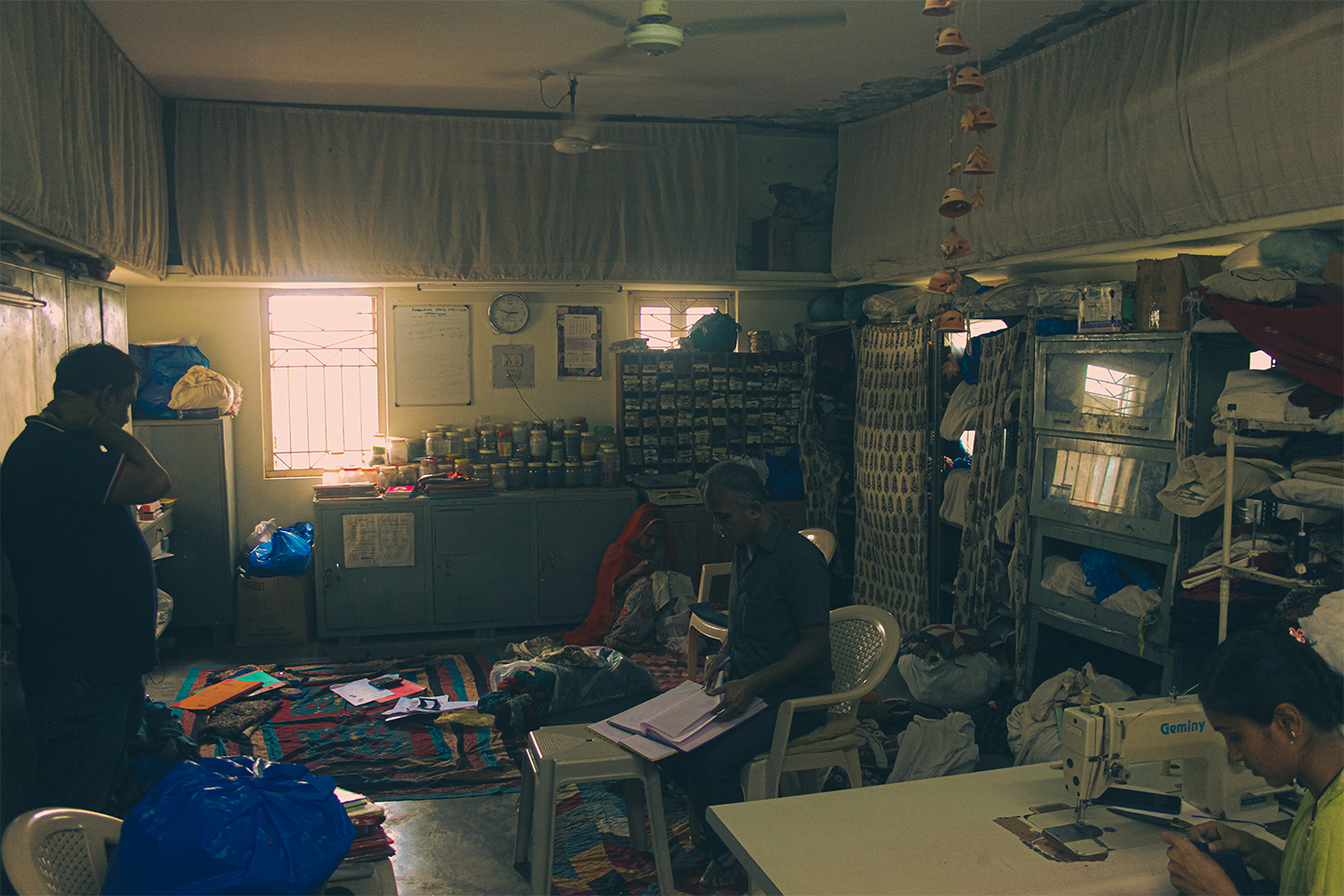
Kala Raksha, Bhuj, India. Photo courtesy of the author
Just 25 km north of Bhuj, in the Sumrasar Sheikh village, lies Kala Raksha. This trust, established as a grassroots social enterprise in 1993, is committed to preserving and promoting the traditional embroidery and applique arts of Kutch, making them both culturally and economically viable.
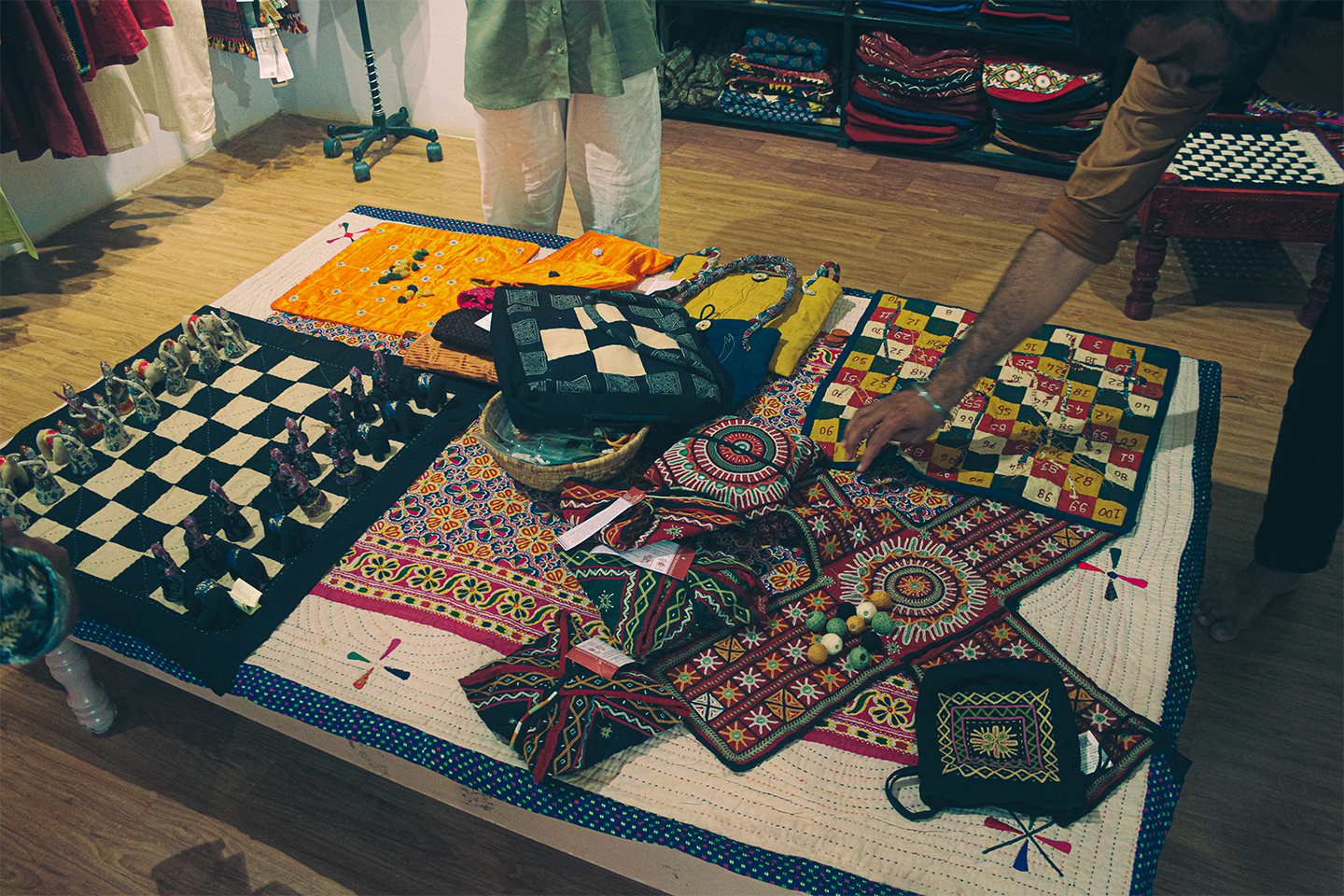
Craft work to create chessboards and more at Kala Raksha. Photo courtesy of the author
With over 300 talented female embroiderers, Kala Raksha was the perfect beginning of our recent journey; it was like stepping into a secret world of rare embroidery arts. Imagine fashion enthusiasts like us immersing themselves in the intricate details and stories behind each stitch. Keen to know more? We’ve got you covered with a travel journal, providing an insider’s peek into the magic behind the stitches.
As we stepped into Kala Raksha, our attention was irresistibly drawn to the vibrant array of textiles and crafts on display, each a tribute to the diverse talents and techniques honed by Kutch artists.
What truly set Kala Raksha apart was the artisans’ warm and friendly attitude. They willingly shared with us the history behind their art pieces, along with the technical skills required and the profound cultural significance embedded in each creation. Our mutual passion for the arts seemed to transcend language barriers in our interactions.
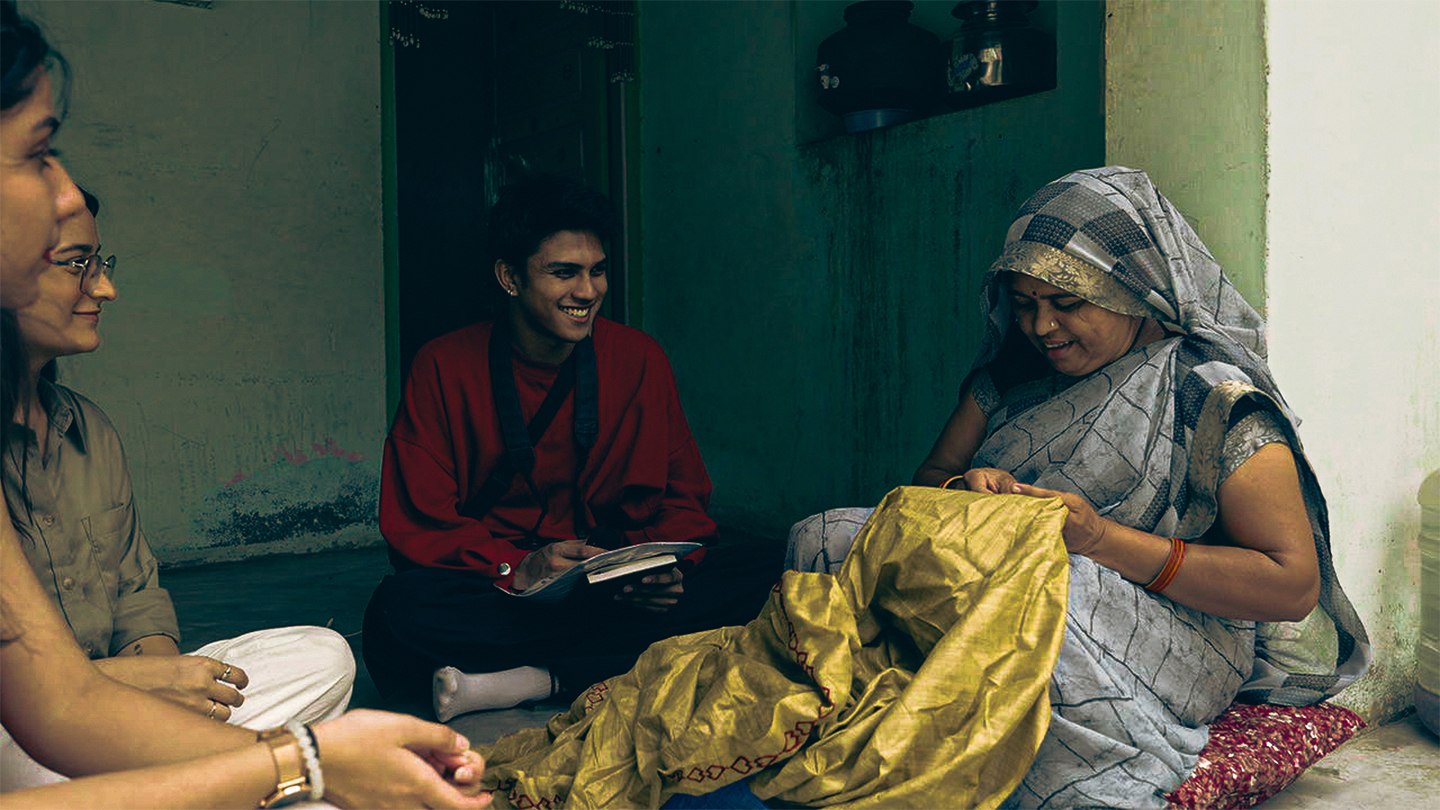
Our interview with a local artisan at Kala Raksha. Photo courtesy of the author
The interview with local artisans revealed that, in earlier times, girls were expected to create embroideries for their dowries, with the stitching reflecting their personalities. They also discussed the pivotal role that Kala Raksha has played in nurturing their growth. As they showcased their art to us as representatives of future generations, their genuine joy was palpable.
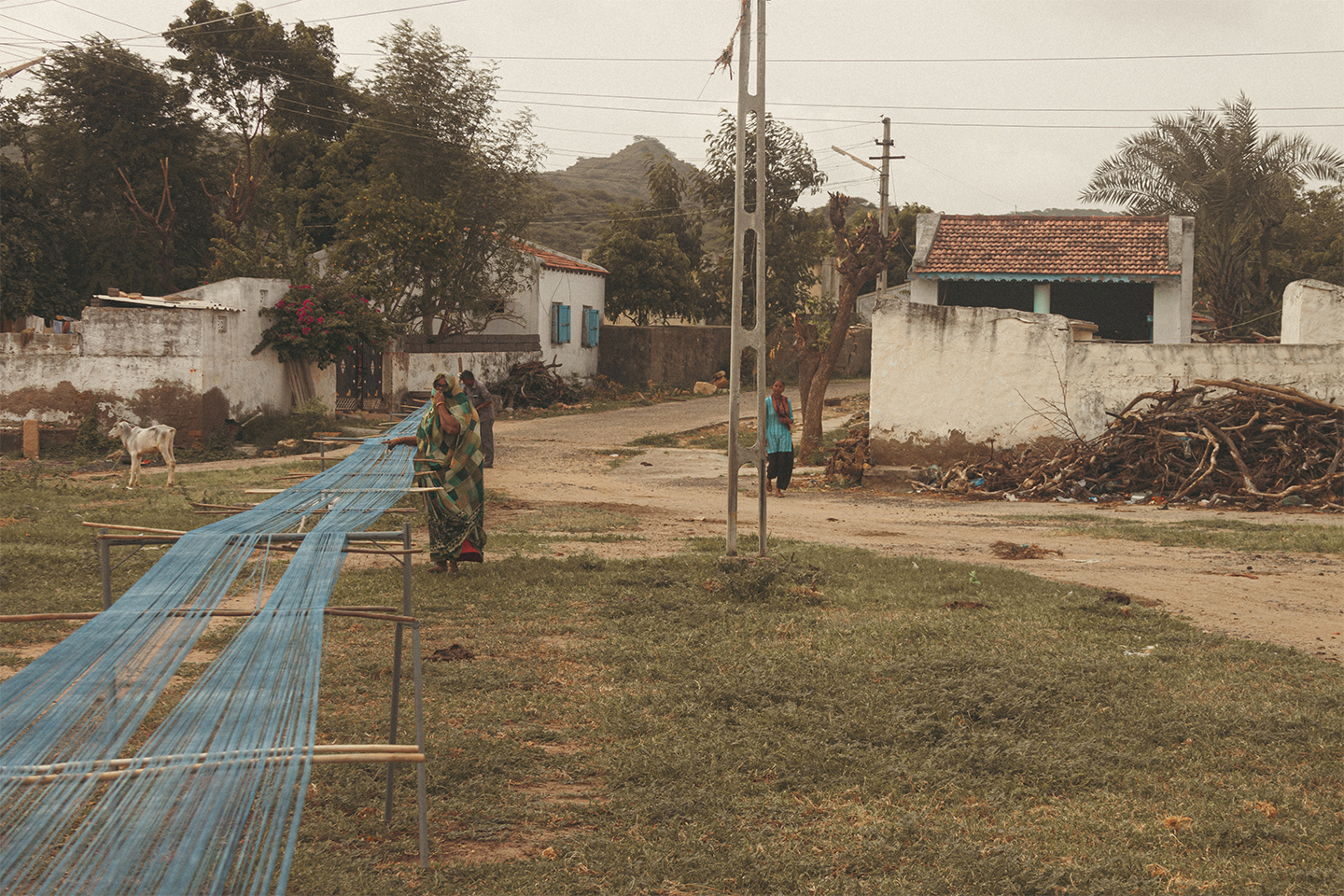
Local artisans dyeing threads. Photo courtesy of the author
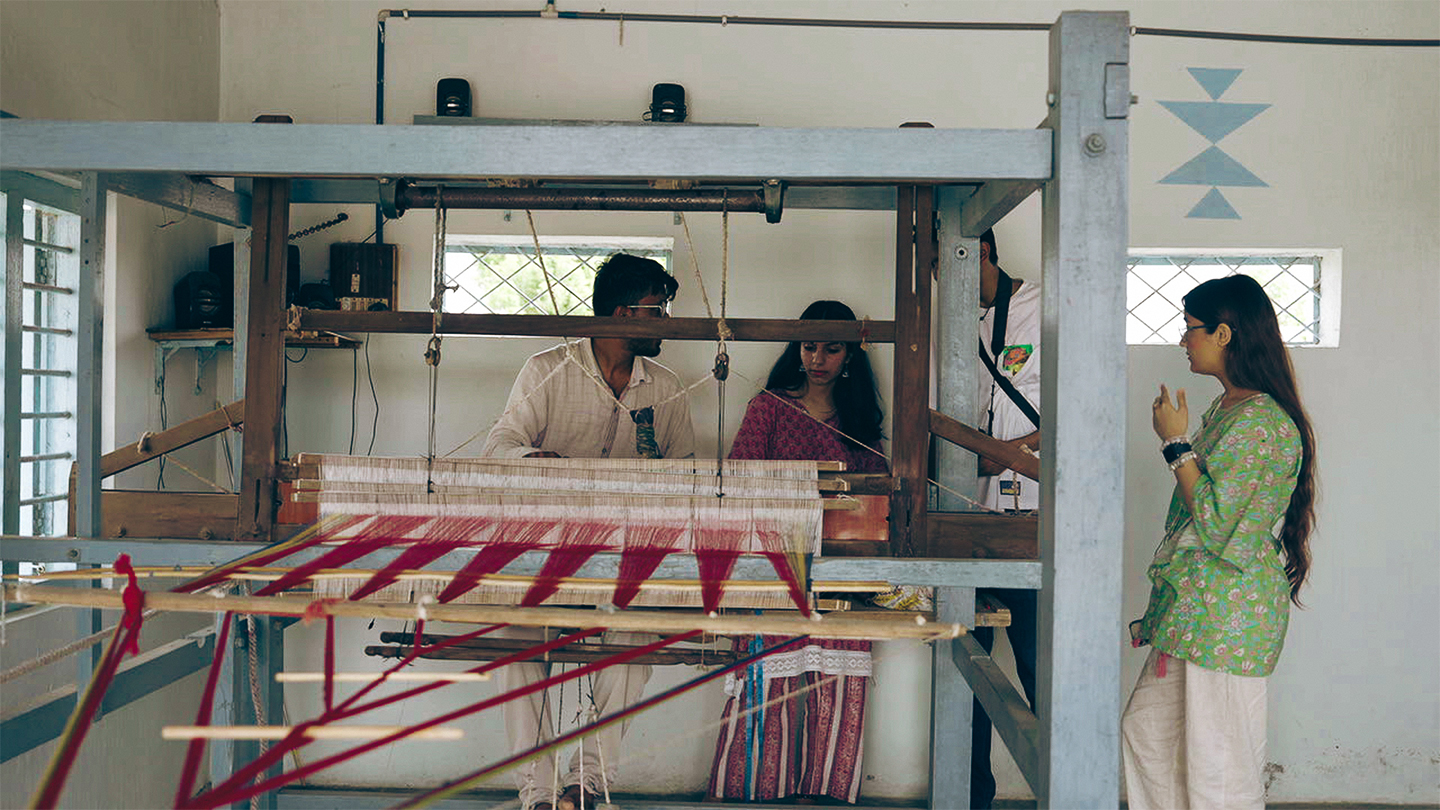
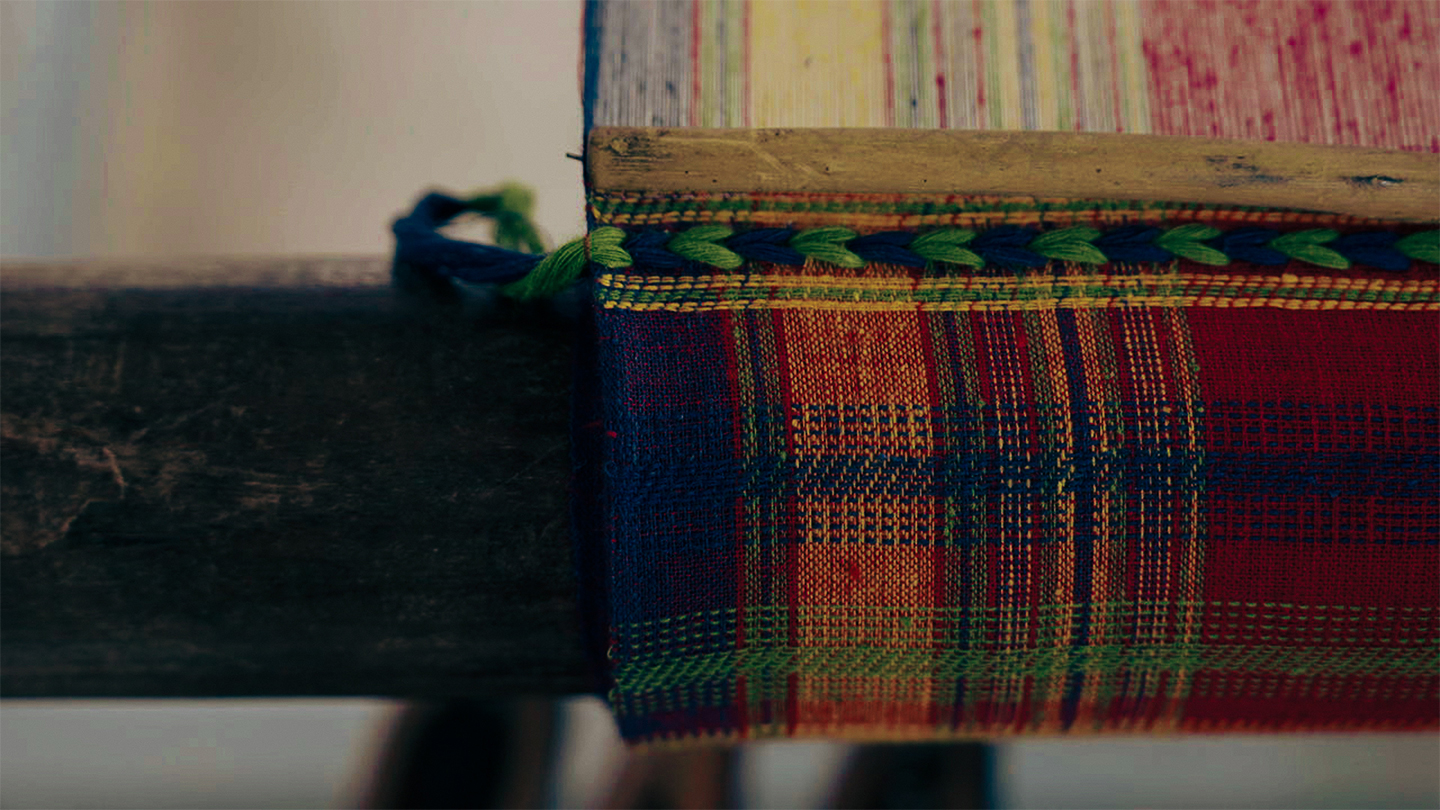
Crafting fabrics with a handloom, adorning them with various motifs. Photo courtesy of the author
On the second day, during our journey to Kotay village, we met some interesting artisans engaged in thread dyeing. Their entire family was immersed in this craft, and they graciously invited us to tour their production facility, where intricate weaves come to life. Intrigued by the themes they used, we inquired about their meaning. They explained that each motif, whether a tree, flower or otherwise, holds a unique meaning. Emphasising the significance of colour choices in the process, they generously shared insights.
What struck us even more was the warmth and friendliness of these people. They enthusiastically exchanged details about their craft and side ventures, welcoming us with broad smiles. To add to the hospitality, they kindly offered us food—a gesture that topped off our memorable visit.
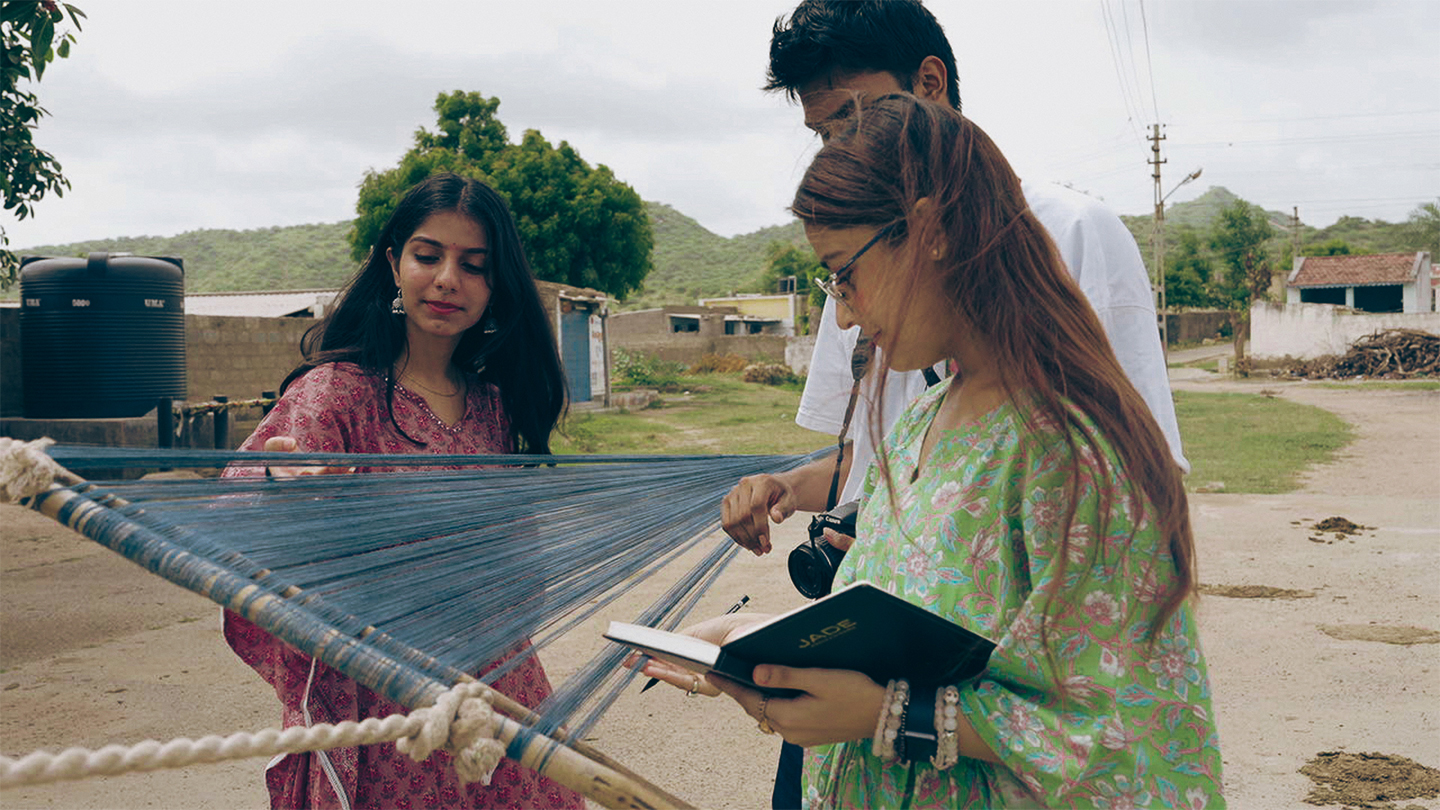
Exploring the traditional embroidery arts of Kutch. Photo courtesy of the author
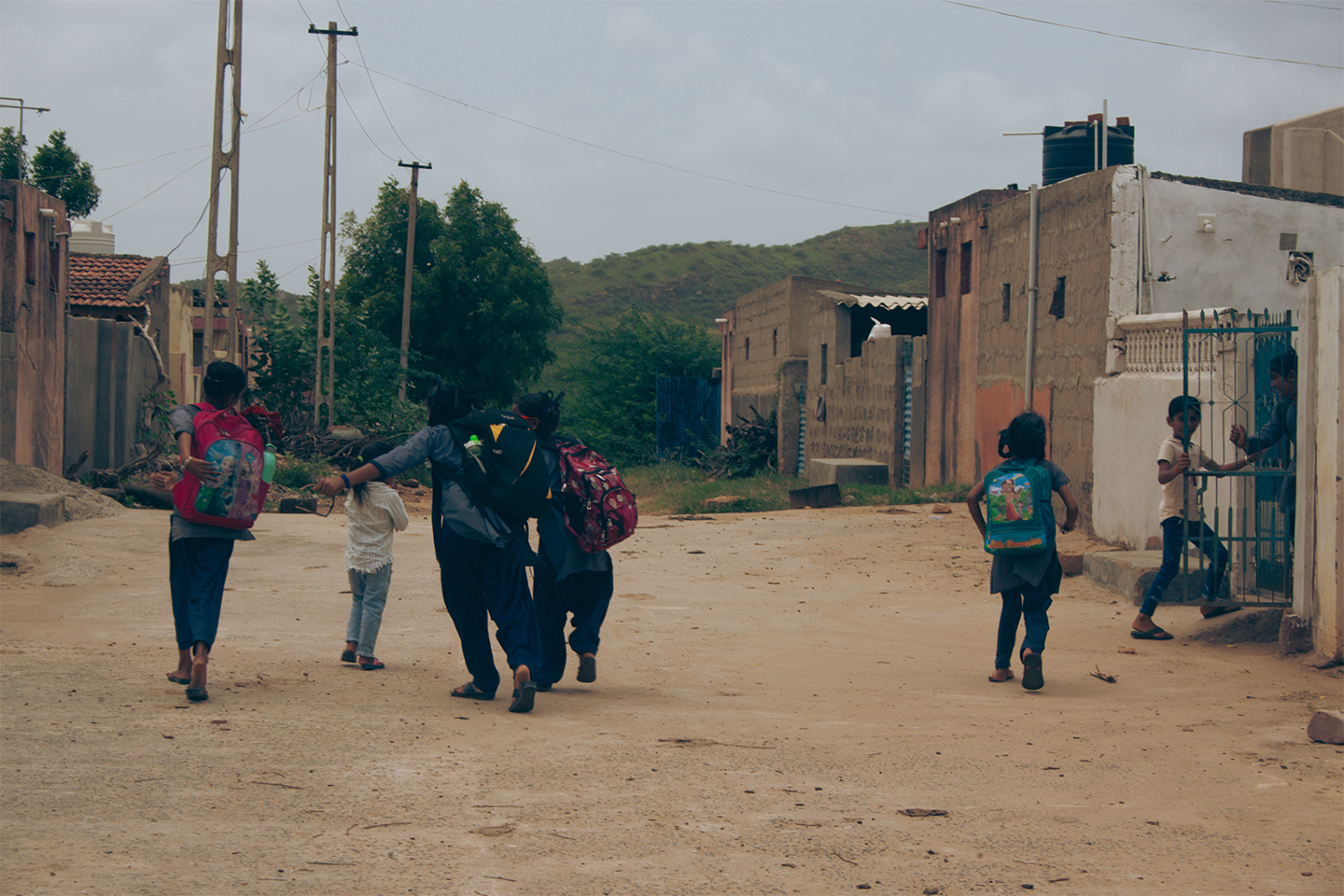
Children running to their homes. Photo courtesy of the author
When we found ourselves surrounded by children from the village, it dawned on us that the concept of ‘foreignness’ is merely a matter of perspective. We were both ‘foreign’ to each other, exploring the boundaries of our respective worlds. In this exchange, we discovered the beauty of embracing the unknown, building bridges across cultures and generations, and recognising the shared humanity that binds us all together.
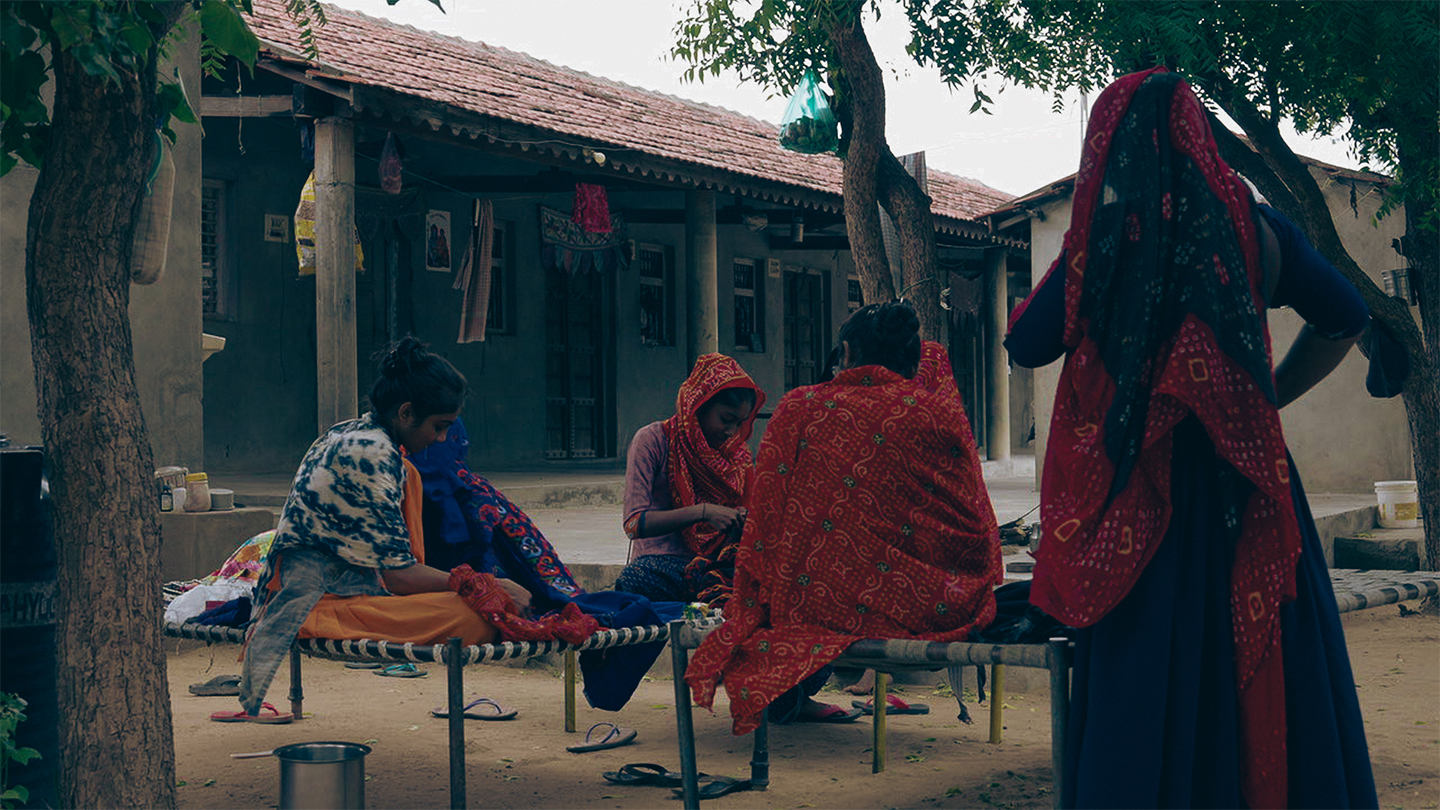
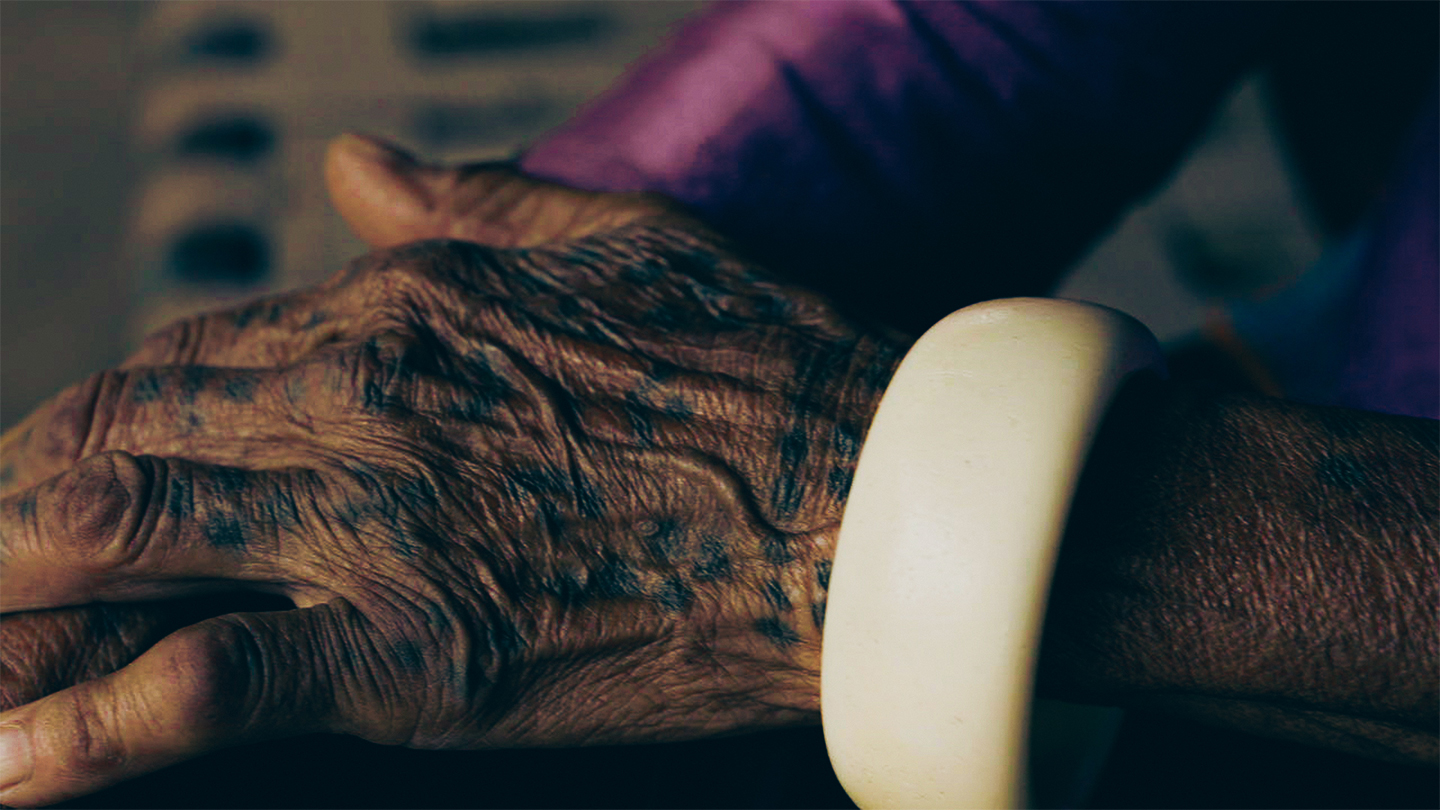
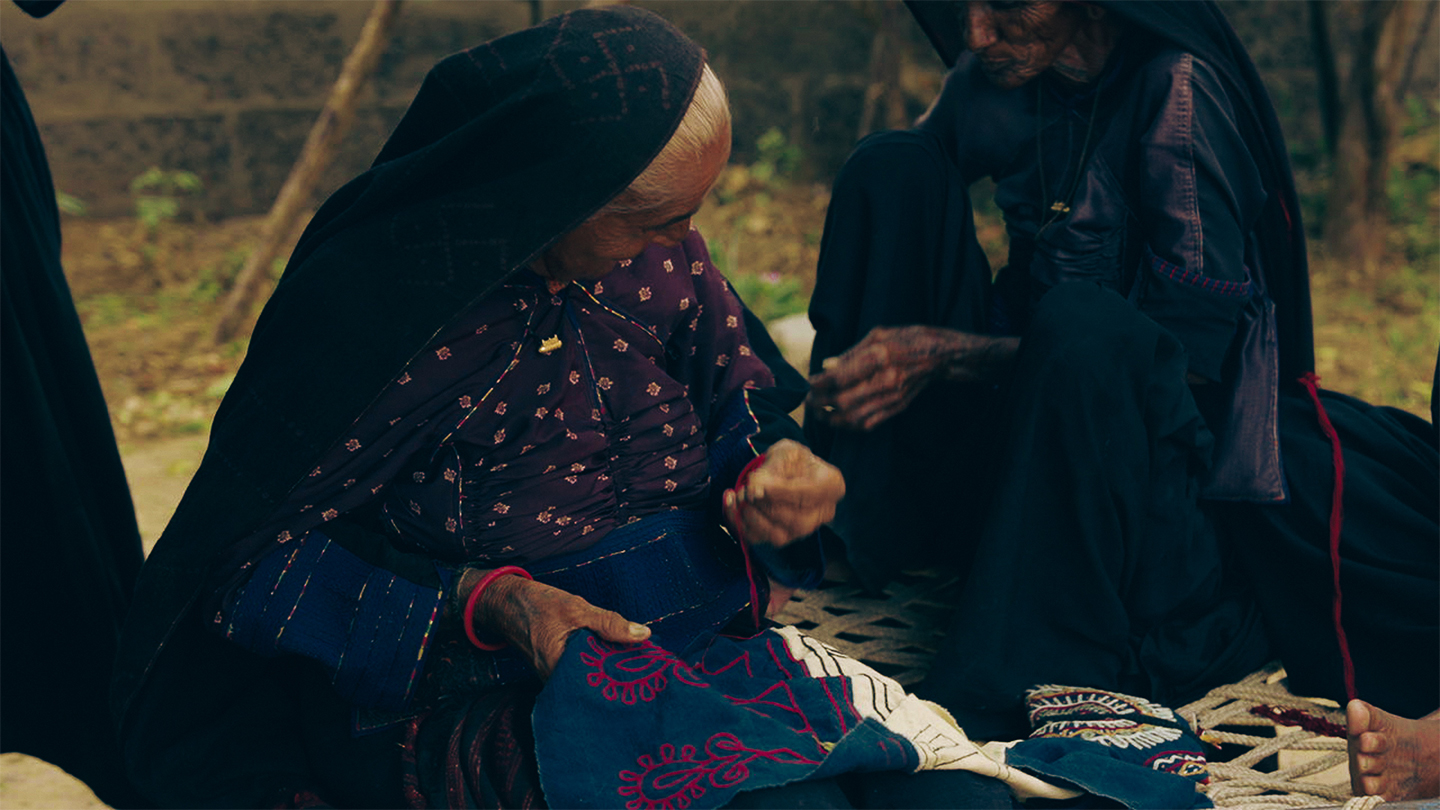
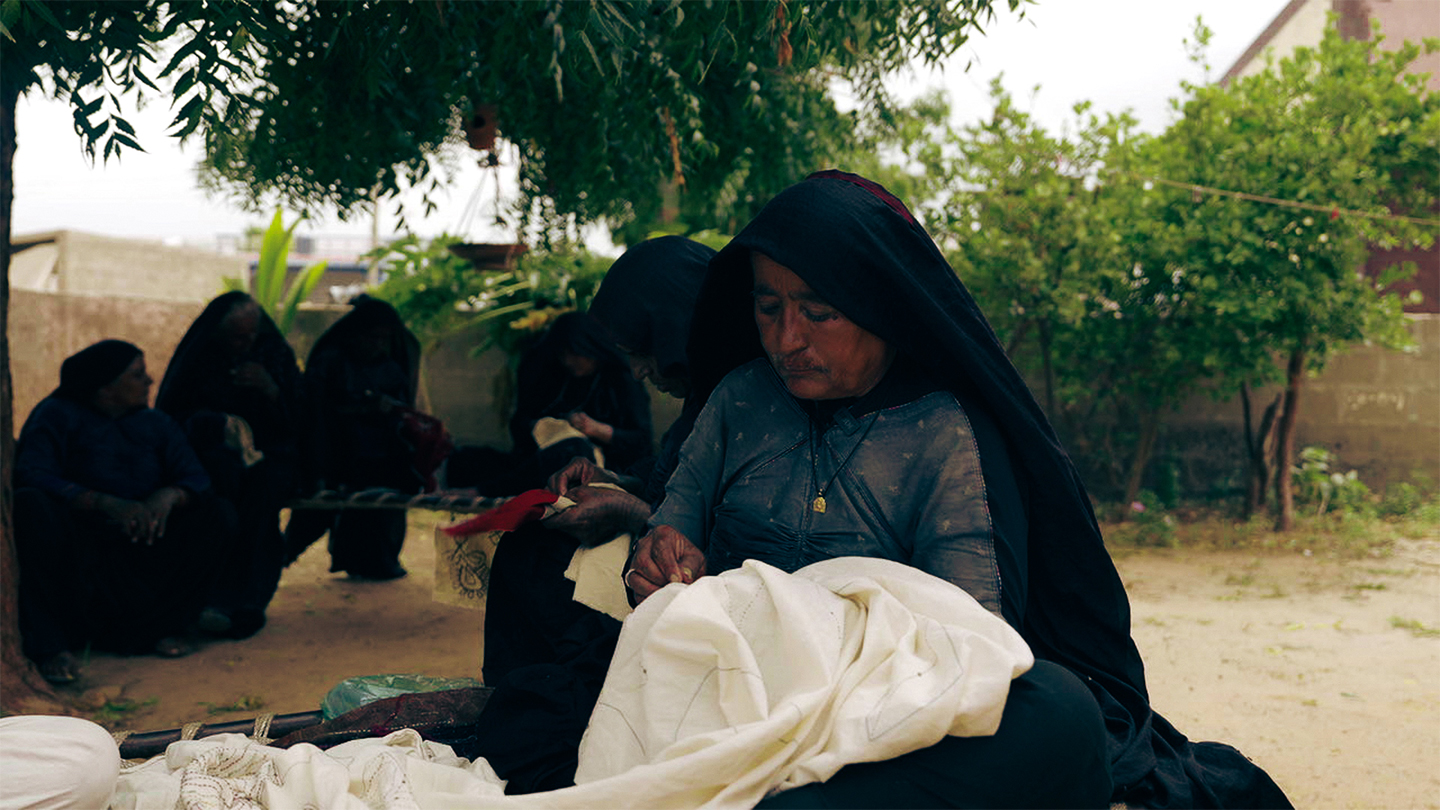
Women of the Rabari community. Photo courtesy of the author
The Rabari community frequently practices this craft, with a significant portion dedicated to their bridal trousseau. The Rabari embroidery of Kutch has absorbed numerous modern motifs and styles in the present era. Despite its traditional roots, embroidery evolves constantly to stay in step with current fashion trends.
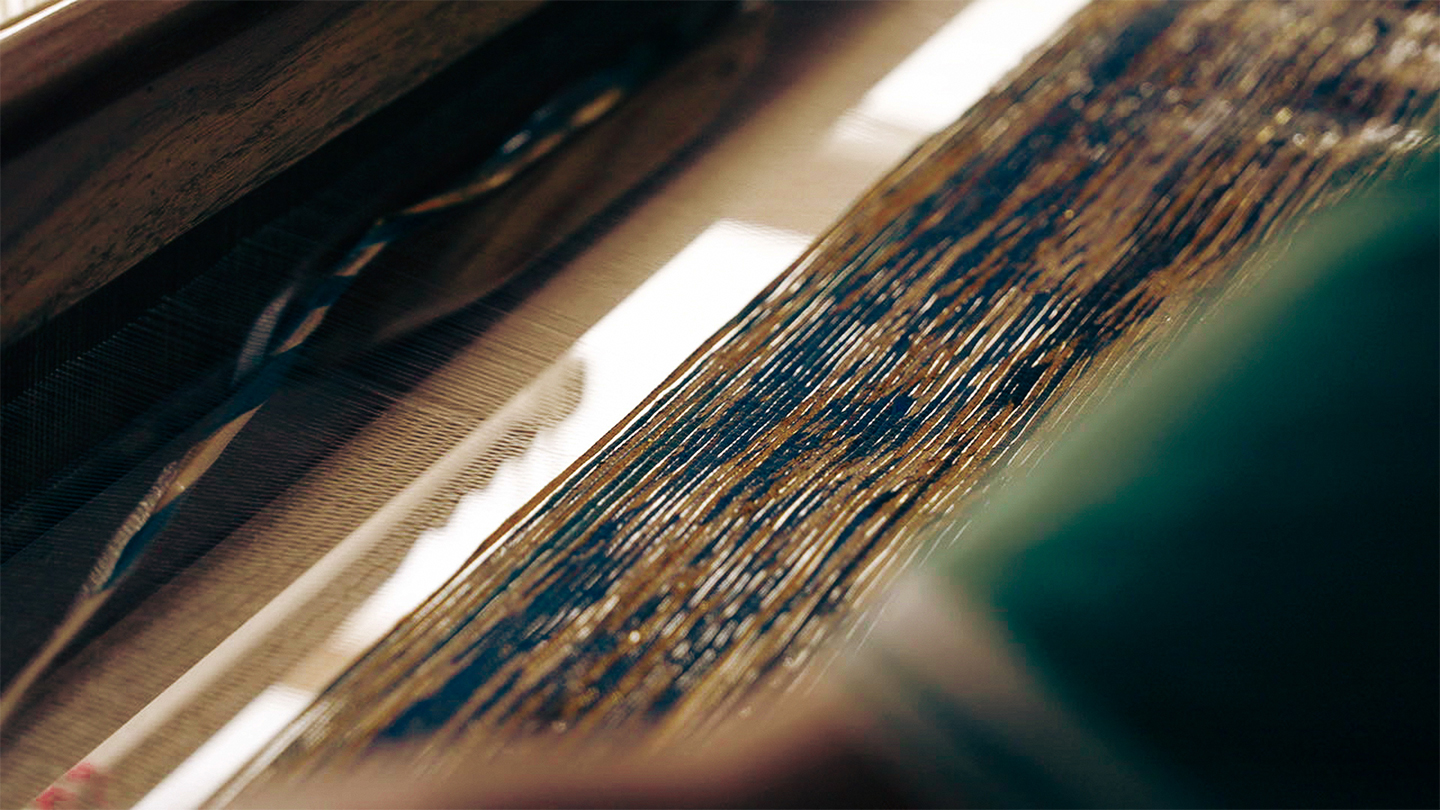
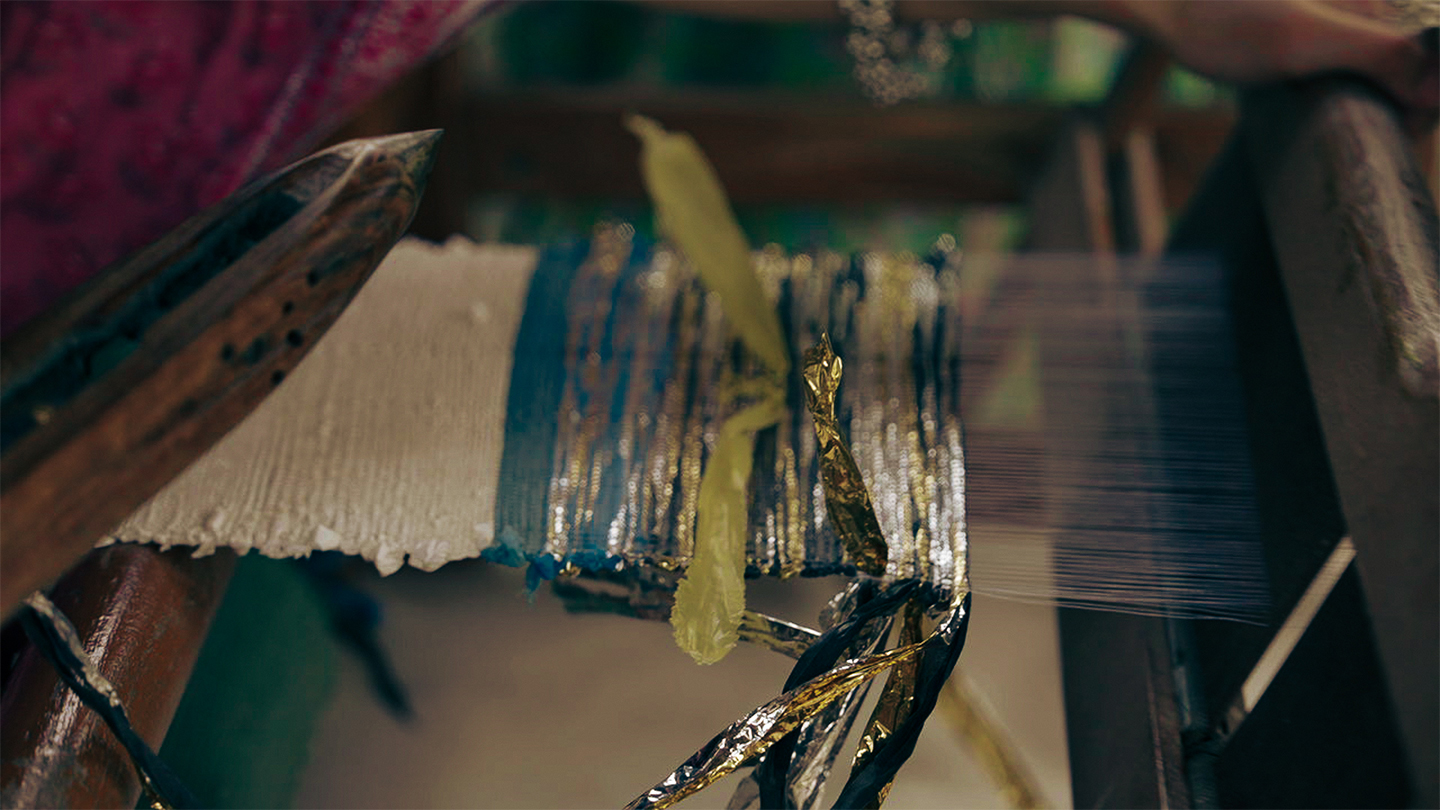
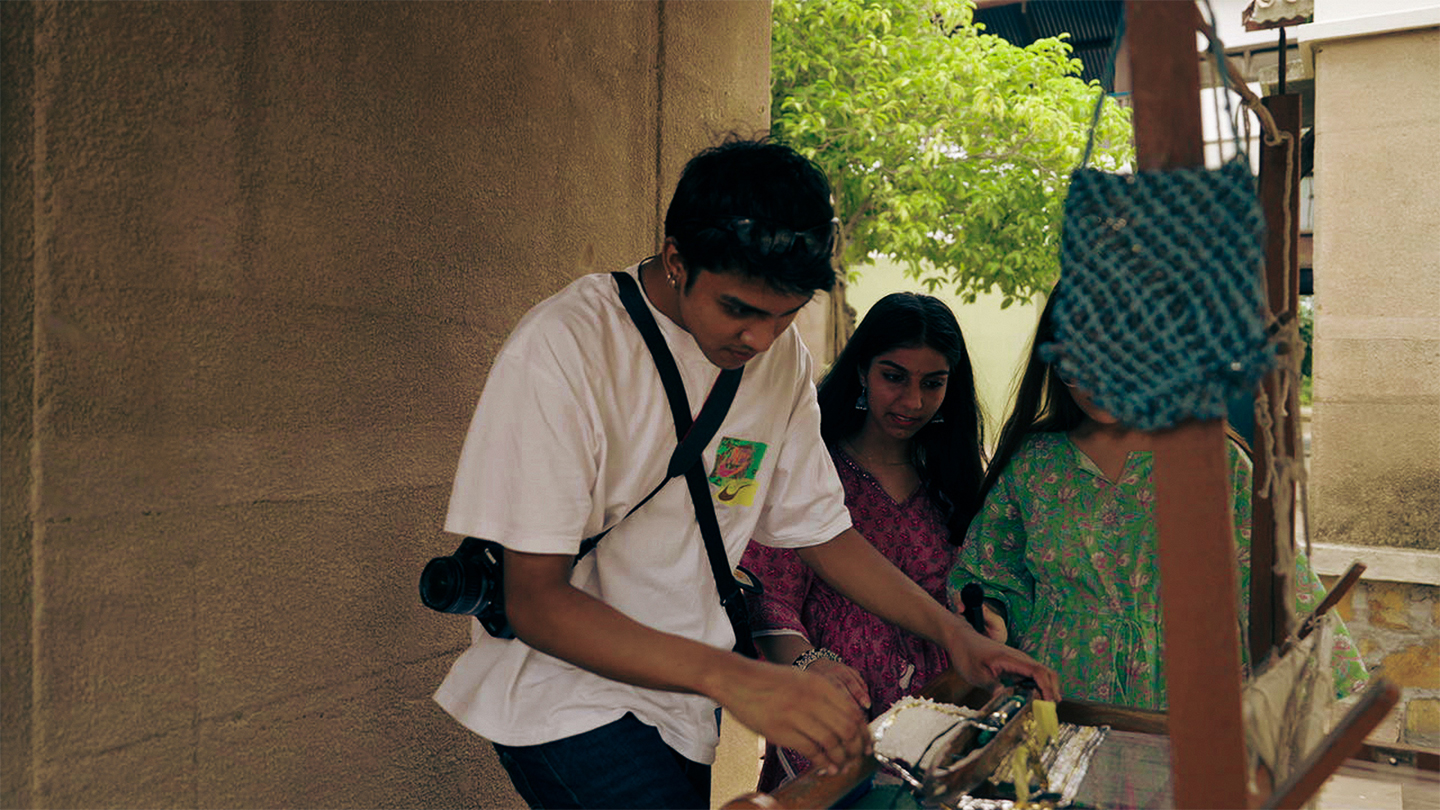
Embarking on our weaving journey. Photo courtesy of the author
We also tried our hand at weaving, and the weavers were delighted to share their art and tradition with the next generation. Moreover, we were thrilled and eager to learn this craft from seasoned professionals who have dedicated decades to its practice. We had the opportunity to weave with recycled plastic and observe others engaging in the process.
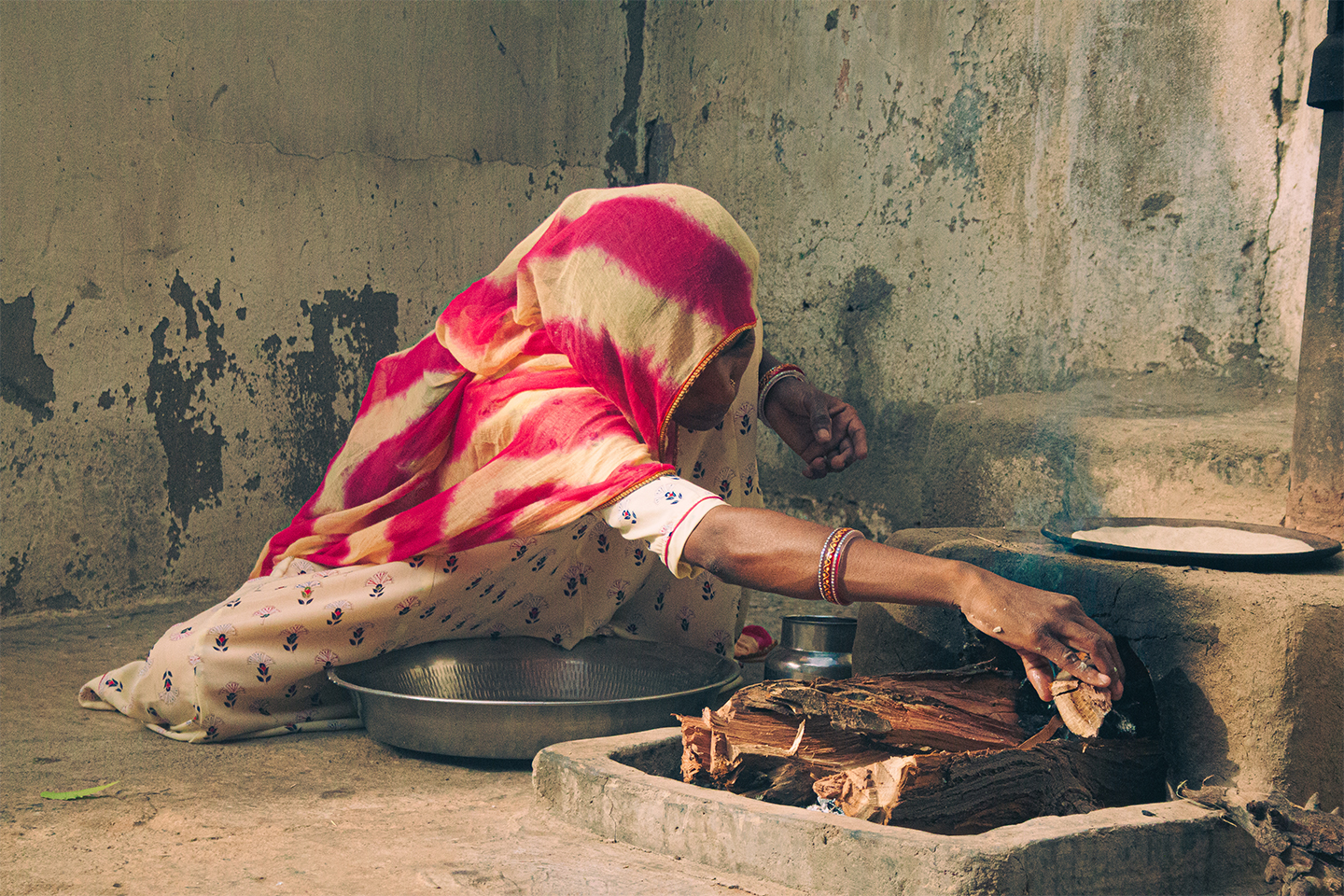
A woman preparing a traditional roti. Photo courtesy of the author
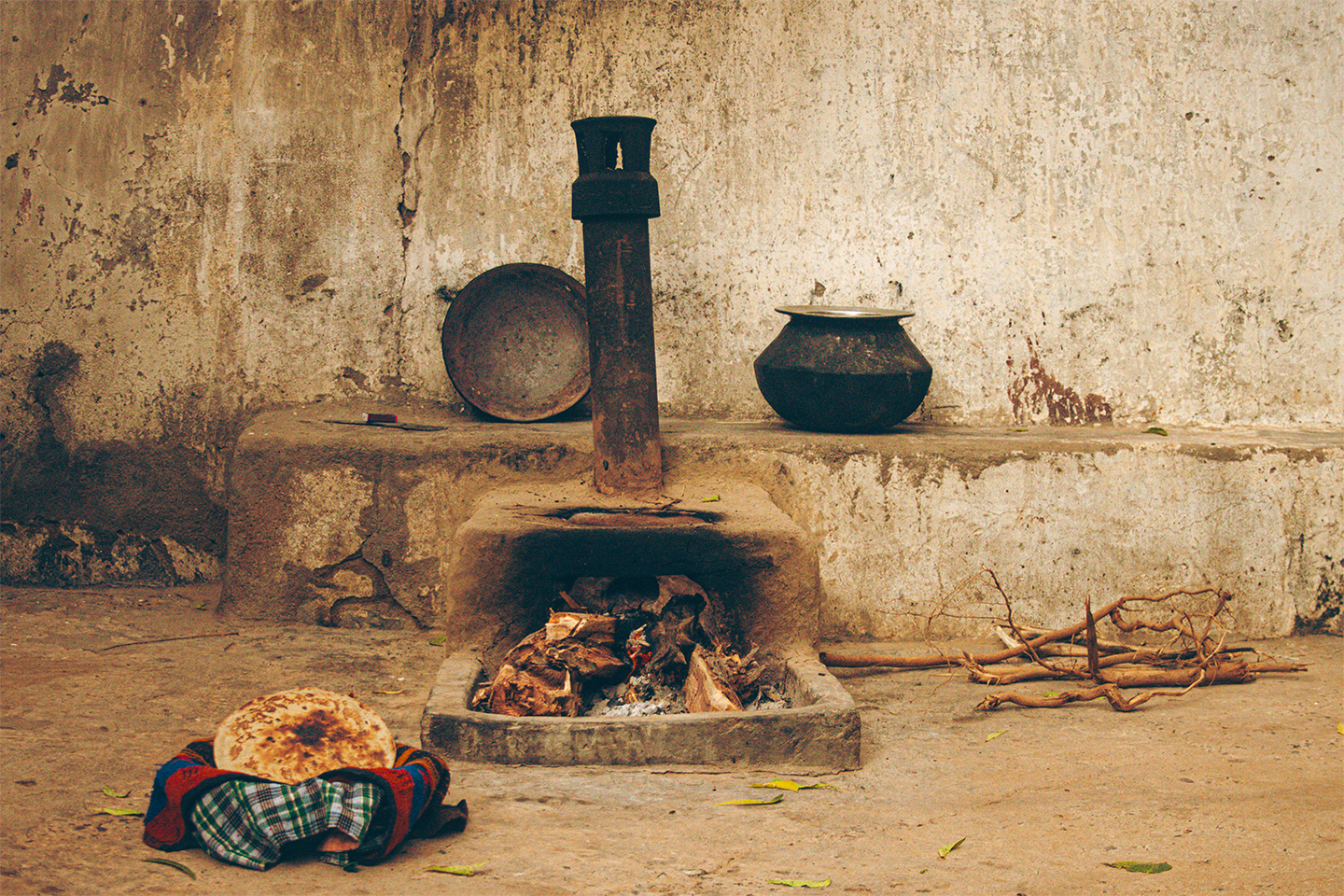
An old-style cooking oven. Photo courtesy of the author
While savouring their traditional breakfast on the third day, we realised that each dish held a piece of Bhuj’s history. Discovering their heritage was as crucial as learning how to cook during the program. We understood that cooking is a language, a storytelling technique, and a means to spread love and culture through the delectable medium of food.
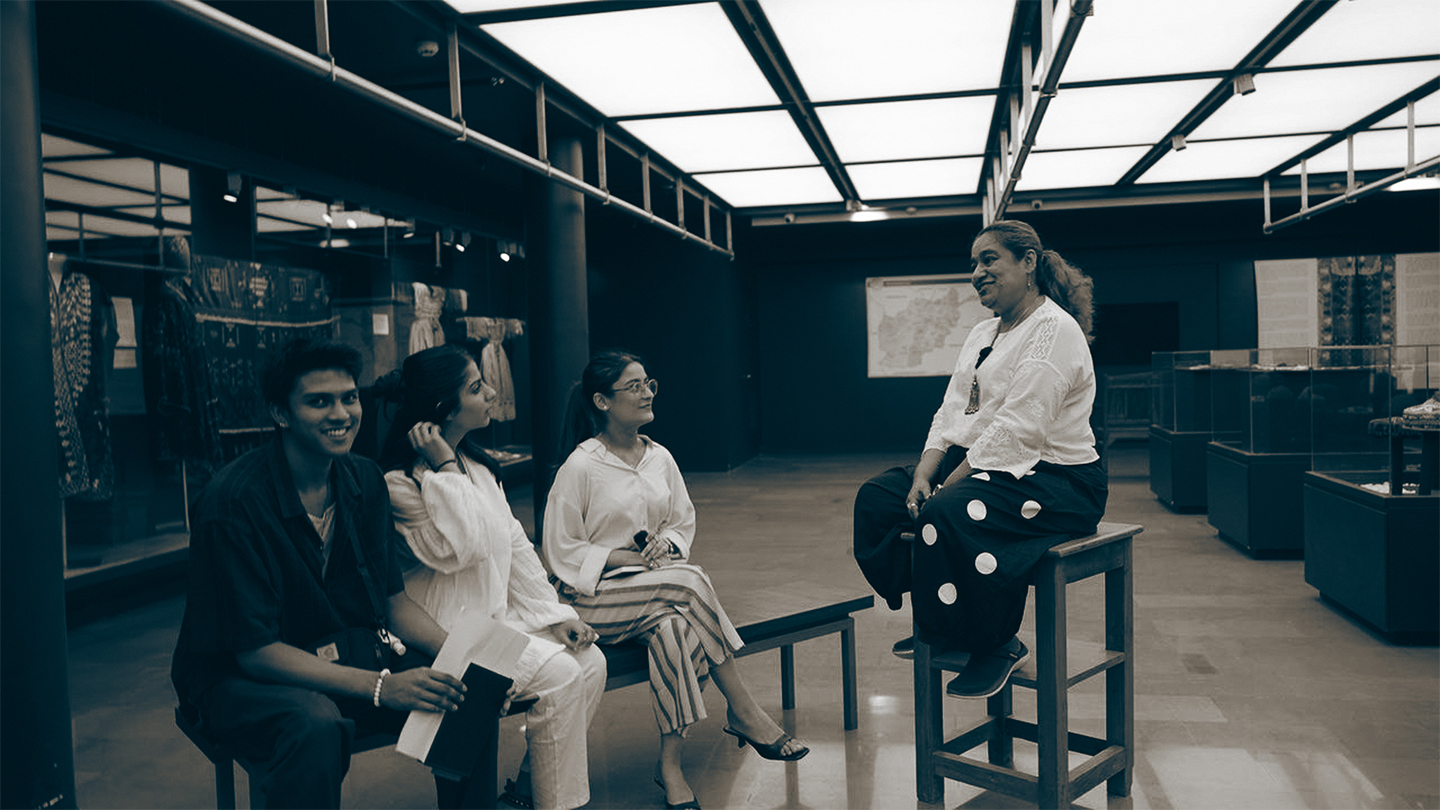
In conversation with Ami Shroff, Director of the Living and Learning Design Centre (LLDC). Photo courtesy of the author
Ami Shroff, the living legend steering the Living and Learning Design Center (LLDC) in Bhuj, Gujarat, opened up to us in an exclusive interview. As the Museum Director and Managing Trustee since its inception in January 2016, Shroff’s vision for the LLDC goes beyond a mere institution— a project under the Shrujan Trust umbrella; it stands as a vibrant hub dedicated to preserving, promoting, and celebrating all crafts within the Kutch region.
Nestled on a sprawling 9-acre campus, the LLDC is a collaborative space fostering empowerment for craftspersons. The commitment to enhancing the skills and potential of practising and aspiring kaarigars (craftspeople), enabling them to earn a dignified livelihood, permeates every aspect of the centre’s operations.
A highlight is the LLDC’s hosting of India’s largest Crafts Museum, a treasure comparable to top-tier international counterparts. This space proudly preserves and honours the rich legacy of Bhuj’s artistic traditions, showcasing textiles, embroidery works, traditional crafts, and cultural treasures.
Our conversation with Ami Shroff left us enthralled by her unwavering commitment to improving the welfare of the community. She stands as a living example of how individuals with purpose can shape society and preserve cultural heritage. Shroff’s involvement with the LLDC Museum is both a promise for a culturally enriched future and a guardian of the essence of the past.
We express our sincere appreciation to Jade and Istituto Marangoni Mumbai for providing us with this invaluable opportunity to travel. This journey not only expanded our understanding of culture but also extended support to the artisans of Bhuj. We are immensely grateful for their dedication to preserving and promoting traditional craftsmanship, as their assistance was crucial in making this project possible. Witnessing Jade play such a significant role in safeguarding these priceless customs is truly encouraging.
Avinam Palikhe
Fashion Design, 2nd year, Mumbai



